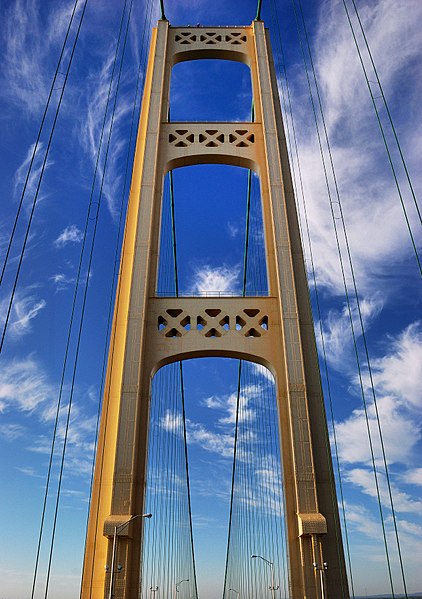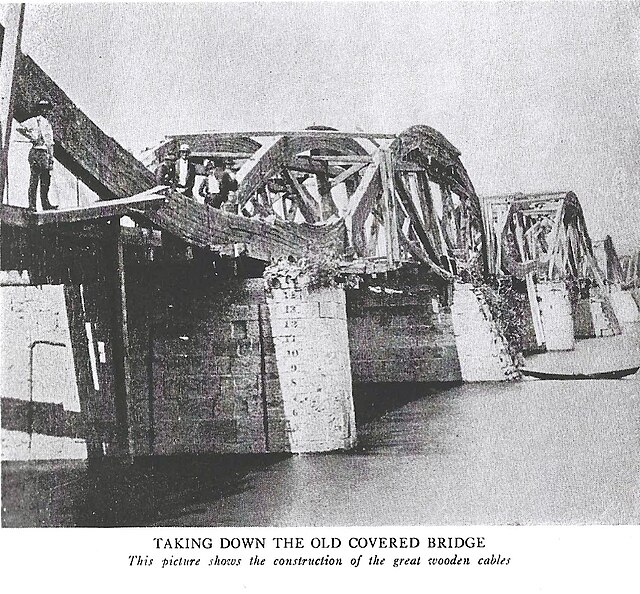The Mackinac Bridge is a suspension bridge that connects the Upper and Lower peninsulas of the U.S. state of Michigan. It spans the Straits of Mackinac, a body of water connecting Lake Michigan and Lake Huron, two of the Great Lakes. Opened in 1957, the 26,372-foot-long bridge is the world's 27th-longest main span and is the longest suspension bridge between anchorages in the Western Hemisphere. The Mackinac Bridge is part of Interstate 75 (I-75) and the Lake Michigan and Huron components of the Great Lakes Circle Tour across the straits; it is also a segment of the U.S. North Country National Scenic Trail. The bridge connects the city of St. Ignace to the north with the village of Mackinaw City to the south.
Mackinac Bridge in June 2010
Vacationland, the largest and last Michigan State Highway Department automobile ferry put in service prior to the completion of the Mackinac Bridge
Bridge's opening in November 1957
View of the north tower of the bridge
A suspension bridge is a type of bridge in which the deck is hung below suspension cables on vertical suspenders. The first modern examples of this type of bridge were built in the early 1800s. Simple suspension bridges, which lack vertical suspenders, have a long history in many mountainous parts of the world.
The 1915 Çanakkale Bridge on the Dardanelles strait in Turkey, connecting Europe and Asia, is the longest suspension bridge in the world.
The double-decked George Washington Bridge, connecting New York City to Bergen County, New Jersey, is the world's busiest suspension bridge, carrying 106 million vehicles annually.
Chushul Chakzam, one of Thangtong Gyalpo's chain bridges, in 1904
The wooden 1808 Burr Suspension Bridge in Schenectady, NY, USA, during demolition in 1871, showing wooden cables. Spans of 160, 190, 180 and 157 feet on 3 piers began to sag, and 4 supporting piers were added in 1833 making 8 spans.








